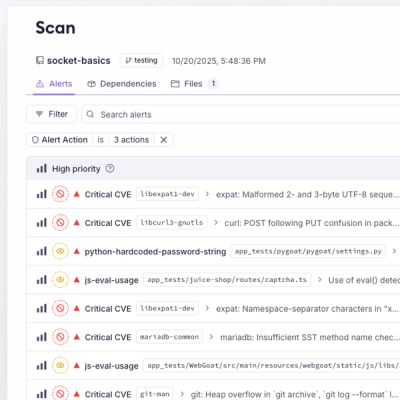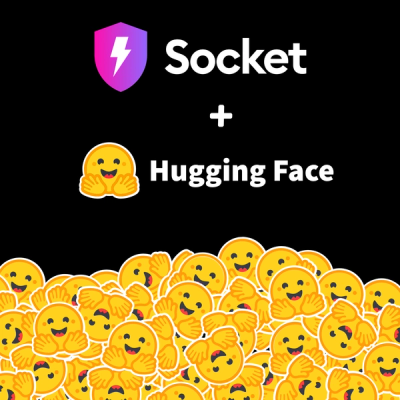
Research
Malicious NuGet Packages Typosquat Nethereum to Exfiltrate Wallet Keys
The Socket Threat Research Team uncovered malicious NuGet packages typosquatting the popular Nethereum project to steal wallet keys.
@contentstack/management
Advanced tools
The Content Management API is used to manage the content of your Contentstack account
Contentstack is a headless CMS with an API-first approach. It is a CMS that developers can use to build powerful cross-platform applications in their favorite languages. All you have to do is build your application frontend, and Contentstack will take care of the rest. Read More.
This SDK uses the Content Management API (CMA). The CMA is used to manage the content of your Contentstack account. This includes creating, updating, deleting, and fetching content of your account. To use the CMA, you will need to authenticate your users with a Management Token or an Authtoken. Read more about it in Authentication.
Note: By using CMA, you can execute GET requests for fetching content. However, we strongly recommend that you always use the Content Delivery API to deliver content to your web or mobile properties.
You need Node.js version 10 or above installed on your machine to use the Contentstack JavaScript CMA SDK.
Install it via npm:
npm i @contentstack/management
To import the SDK, use one of the following ways :
JavaScript ES Modules
import contentstack from '@contentstack/management';
"type": "module" in package.jsonTypeScript with esModuleInterop
import contentstack from '@contentstack/management';
"esModuleInterop": true in tsconfig.jsonTypeScript Namespace Import
import * as contentstack from '@contentstack/management';
TypeScript Destructuring
import contentstack from '@contentstack/management';
const { client } = contentstack;
To use this SDK, you need to authenticate your users by using the Authtoken, credentials, or Management Token (stack-level token).
An Authtoken is a read-write token used to make authorized CMA requests, and it is a user-specific token.
contentstackClient = contentstack.client({ authtoken: 'AUTHTOKEN' })
To Login to Contentstack by using credentials, you can use the following lines of code:
contentstackClient.login({ email: 'EMAIL', password: 'PASSWORD'})
.then((response) => {
console.log(response.notice)
console.log(response.user)
})
Management Tokens are stack-level tokens, with no users attached to them.
contentstackClient.stack({ api_key: 'API_KEY', management_token: 'MANAGEMENT_TOKEN' }).contentType('CONTENT_TYPE_UID')
.fetch()
.then((contenttype) => {
console.log(contenttype)
})
To use the JavaScript CMA SDK, you need to first initialize it. To do this, use the following code:
import contentstack from ‘@contentstack/management’
var contentstackClient = contentstack.client({ authtoken: 'AUTHTOKEN' })
Use the following lines of code to fetch your stack detail using this SDK:
contentstackClient.stack({ api_key: 'API_KEY' })
.fetch()
.then((stack) => {
console.log(stack)
})
To create an entry in a specific content type of a stack, use the following lines of code:
var entry = {
title: 'Sample Entry',
url: '/sampleEntry'
}
contentstackClient.stack({ api_key: 'API_KEY' }).contentType('CONTENT_TYPE_UID').entry().create({ entry })
.then((entry) => {
console.log(entry)
})
The following lines of code can be used to upload assets to your stack:
var asset = {
upload: 'path/to/file',
title: 'Asset Title'
}
contentstackClient.stack({ api_key: 'API_KEY' }).asset().create({ asset })
.then((asset) => {
console.log(asset)
})
Copyright © 2012-2025 Contentstack. All Rights Reserved
Permission is hereby granted, free of charge, to any person obtaining a copy of this software and associated documentation files (the "Software"), to deal in the Software without restriction, including without limitation the rights to use, copy, modify, merge, publish, distribute, sublicense, and/or sell copies of the Software, and to permit persons to whom the Software is furnished to do so, subject to the following conditions:
The above copyright notice and this permission notice shall be included in all copies or substantial portions of the Software.
THE SOFTWARE IS PROVIDED "AS IS", WITHOUT WARRANTY OF ANY KIND, EXPRESS OR IMPLIED, INCLUDING BUT NOT LIMITED TO THE WARRANTIES OF MERCHANTABILITY, FITNESS FOR A PARTICULAR PURPOSE AND NONINFRINGEMENT. IN NO EVENT SHALL THE AUTHORS OR COPYRIGHT HOLDERS BE LIABLE FOR ANY CLAIM, DAMAGES OR OTHER LIABILITY, WHETHER IN AN ACTION OF CONTRACT, TORT OR OTHERWISE, ARISING FROM, OUT OF OR IN CONNECTION WITH THE SOFTWARE OR THE USE OR OTHER DEALINGS IN THE SOFTWARE.
v1.25.1 (2025-10-06)
FAQs
The Content Management API is used to manage the content of your Contentstack account
The npm package @contentstack/management receives a total of 11,444 weekly downloads. As such, @contentstack/management popularity was classified as popular.
We found that @contentstack/management demonstrated a healthy version release cadence and project activity because the last version was released less than a year ago. It has 2 open source maintainers collaborating on the project.
Did you know?

Socket for GitHub automatically highlights issues in each pull request and monitors the health of all your open source dependencies. Discover the contents of your packages and block harmful activity before you install or update your dependencies.

Research
The Socket Threat Research Team uncovered malicious NuGet packages typosquatting the popular Nethereum project to steal wallet keys.

Product
A single platform for static analysis, secrets detection, container scanning, and CVE checks—built on trusted open source tools, ready to run out of the box.

Product
Socket is launching experimental protection for the Hugging Face ecosystem, scanning for malware and malicious payload injections inside model files to prevent silent AI supply chain attacks.